Contents
In recent years, many additional opportunities have opened up for gardeners, with the help of which they can diversify the usual methods and ways of growing traditional crops. So strawberries or garden strawberries are no exception. First, remontant varieties appeared, which made it possible to feast on tasty and healthy berries almost throughout the year. And then, suddenly, the so-called curly strawberries began to be advertised everywhere, the pictures of which amazed the imagination of even sophisticated gardeners. But after all, there are no climbing varieties of strawberries – it’s a completely different matter – ampelous strawberries, which are just a popular variety of remontant strawberries. It is the care of ampelous strawberries that is the subject of this article.
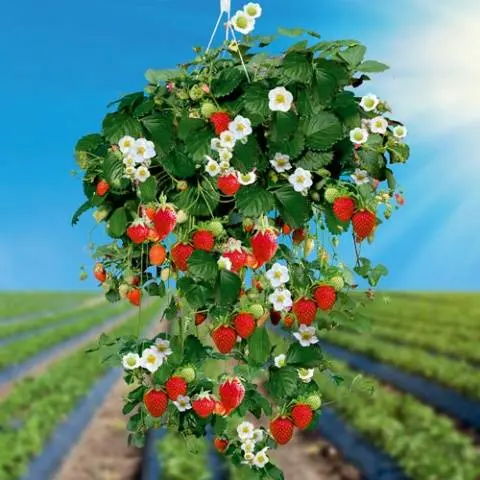
Ampel strawberry – what does it mean
There are varieties of strawberries that can not only form quite a lot of long whiskers, but also form flowering and fruiting rosettes on them, even without contact with the soil. These rosettes, in turn, also give a mustache with rosettes.
Due to this, by the time the first berries begin to ripen on the mother plant, the first buds can already form on the daughter rosettes.
If you plant such varieties in a tall flowerpot or hanging planter and hang all the shoots down, then you will get an excellent-looking ampelous strawberry. In general, the word “ampel” is translated from German as a hanging vase. Therefore, ampelous strawberries are more a way of growing and shaping plants than a specific type of strawberry.
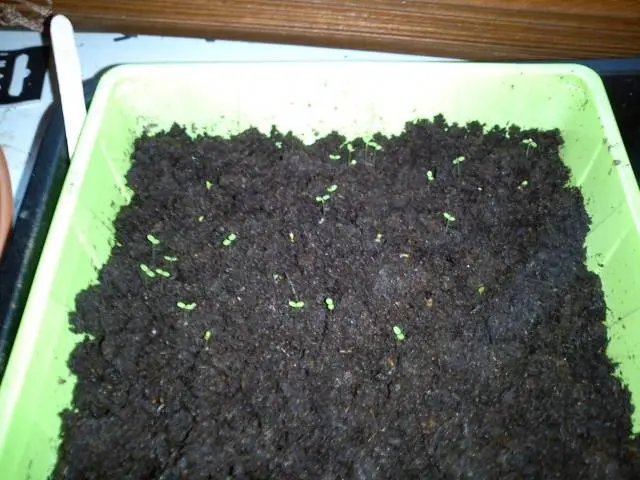
It is remontant strawberry varieties that are most often used as ampelous varieties, since they allow you to extend the fruiting period from late spring to autumn. All this time, flowerpots or baskets with ampelous strawberries will be able to decorate your site.
Most often, this strawberry is used for growing at home, on balconies or terraces. Sometimes they even sacrifice fruiting for the sake of decorativeness – after all, if the extra whiskers are not cut off from the strawberries, then the mother bushes will not be able to cope with such a load and will not be able to make absolutely all emerging rosettes bloom and produce berries. But a lush cascade of greenery is provided in any case.
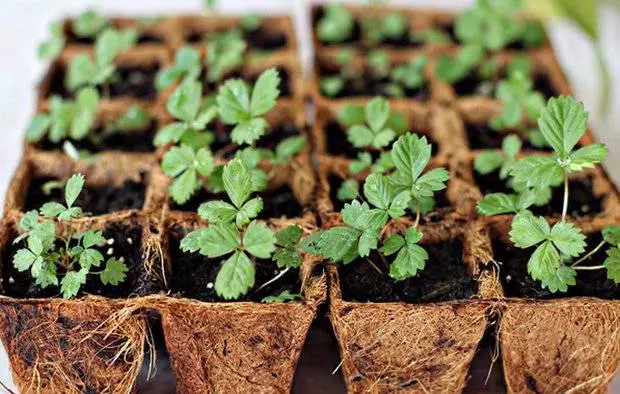
Cultivation from seeds
If you are thinking about how to grow a large number of ampelous strawberry seedlings at once for yourself or for sale, then you can remember the method of growing it from seeds. This method allows you to get a lot of good healthy seedlings in a short time, which will be able to give berries already in the current season, subject to early sowing. In addition, when breeding with mustaches for a long time, there is a danger of accumulation of viral diseases in the bushes, and in most cases they are not transmitted through seeds.
If you buy seeds in a distribution network, you must not forget that strawberry seeds remain viable for a very short time. Therefore, it is strongly recommended to sow them in the year of purchase, otherwise the germination rate may drop several times.
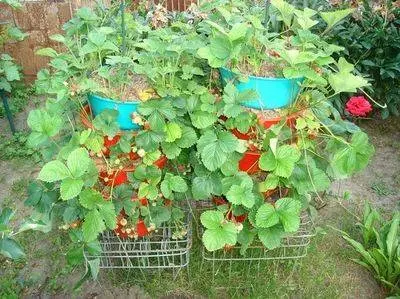
Sowing seeds of ampelous strawberries should be carried out in January or, as a last resort, in February.
Properly selected substrate is very important for growing strawberries from seeds. It should be very light and breathable, because the seeds of the berries are small and in no case should they be deepened into the ground. They germinate only on the surface in the light.
Usually they use a special peat soil, which is well mixed with fine coconut fiber. A thin layer of calcined river sand is poured on top. Sometimes, when sowing strawberry seeds, the following technique is used – the surface of the soil for sowing is covered with a small layer of snow, the seeds are carefully laid out on top. When the snow melts, it will pull the seeds in with it, and they will be both moistened and pressed to the soil.
From above, the crops are covered with a film or glass and placed in a bright, warm place (about + 25 ° C). Crops must be ventilated daily, removing glass or film for 5-10 minutes. Seeds can begin to germinate as early as 7 days, but sometimes some are delayed up to 15-20 days. After germination, the container with crops is placed in the most illuminated place, where the daylight hours are at least 12 hours a day.
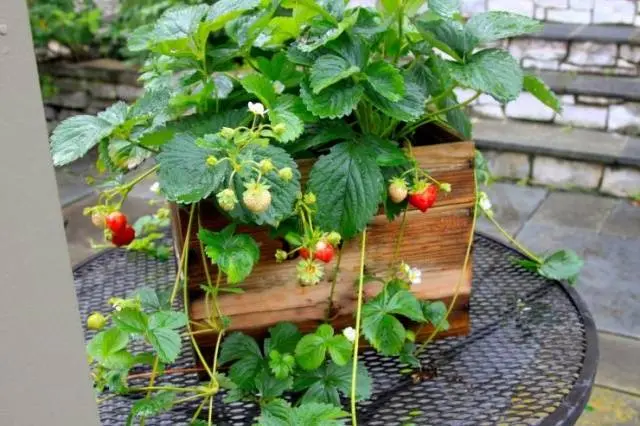
The seedlings continue to be aired daily, but the shelter is finally removed only when the first two true leaves open on the strawberry seedlings.
Water the seedlings very moderately with a syringe or using a pipette, since excessive soil moisture can lead to an outbreak of black leg disease.
The picking of ampelous strawberry seedlings is usually carried out a month after germination, planting them in separate small containers. By this time, the seedlings should have at least three true leaves, but they are still small. Picking will help accelerate the development of plants, so that in May they could be planted without fear in open ground conditions.
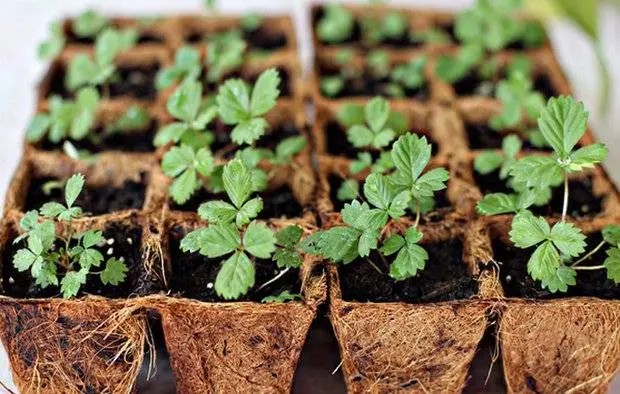
Before planting in the ground, strawberry seedlings are fed several more times with complex mineral fertilizer or diluted manure with the addition of wood ash.
If strawberry seeds for seedlings are planted in January, then in May the first buds and flowers can be observed.
Planting ampelous strawberries
Since ampelous strawberries are most often grown in special containers or in flowerpots, it is necessary to take special care of the composition of the land mixture in which it will grow. Peat, humus, leaf and sod land are usually used in equal proportions with the addition of river sand. It will be wise to add some hydrogel to the substrate. This is a special substance that absorbs water during irrigation, swells, and then, if necessary, is able to give excess moisture to the roots of plants. Since the soil in any container will dry out quickly on hot days, the presence of a hydrogel will help strawberry bushes survive occasional interruptions in watering.

At the bottom of the basket or container in which it is supposed to grow strawberries, a rather thick layer of drainage is poured – it can be expanded clay, pebbles or pieces of charcoal. Planting of ampelous strawberries is carried out in such a way that each bush has from 1,5 to 3 liters of nutrient soil. It is impossible to deepen the bushes, especially in the middle of the bush, the so-called growth point, which should be on the surface of the substrate.
Features of care
Planting and caring for ampelous strawberries have some features, but they are associated primarily with the conditions for growth and formation of bushes. You need to pay attention to the following:
- Watering strawberry bushes should be especially verified, neither drying nor waterlogging of the earthy coma should be allowed. The best option would be to use a hydrogel when planting. You can also use drip irrigation systems and flowerpots with built-in humidity control.
- Due to the remontance of ampel varieties, strawberry bushes need constant and regular top dressing throughout the growing season. After all, in order to feed such an abundance of whiskers and rosettes, plants need enhanced nutrition.
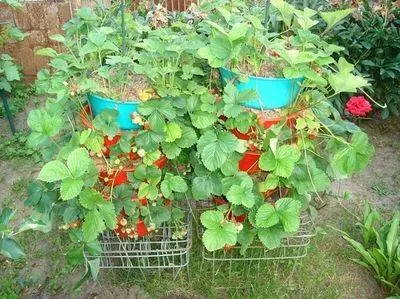
If, when growing ampelous strawberries, the main thing for you is the harvest of berries, and not the decorativeness of plants, then the main care procedure should be to take care of removing extra whiskers and rosettes. The plant is able to feed no more than two outlets on the mustache, it is advisable to remove all the rest as they appear. The total number of mustaches should also not be too large. Usually no more than the first five mustaches are left, but you can experiment with top dressing and watch the development of your bushes. Ultimately, much depends on the characteristics of a particular variety.
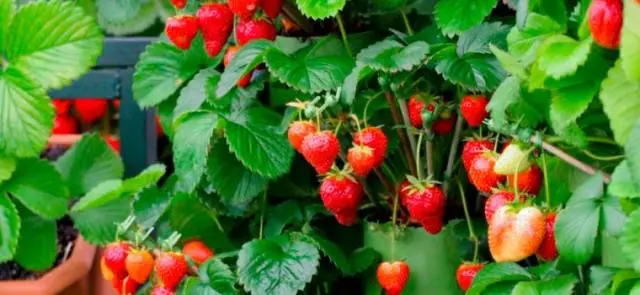
Often gardeners are interested in how to properly store ampelous strawberries in the winter.
- The most reliable way is to move the bushes in the fall from containers to beds, bury them in the ground and mulch with fallen leaves or straw. You can dig bushes into the ground along with containers, if they allow it.
- In the southern regions, it is possible to simply insulate vertical structures with straw mats or dense white non-woven material so as not to get sunburn.
- And in those regions where a lot of snow falls, it is enough to disassemble the vertical structures and place them on the ground. They usually overwinter well under snow cover.
- It is also possible to transfer pots with ampelous varieties to the cellar for the winter, it is only necessary to take into account that strawberries are ideally preserved in winter at temperatures from -5 ° C to + 3 ° C. At higher temperatures, the spread of fungal diseases is possible.
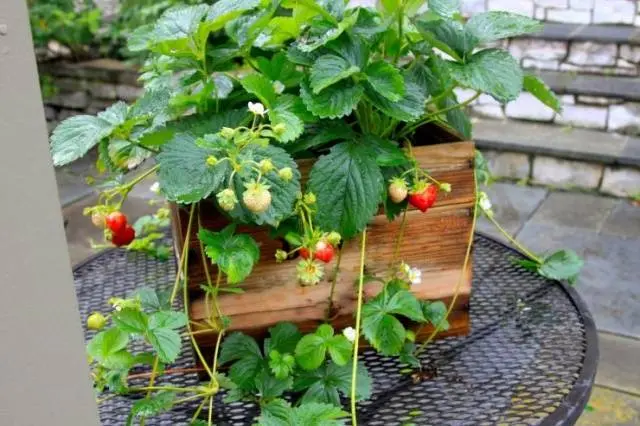
In the spring, strawberry bushes can be planted again in flowerpots and containers, wilted and dry leaves removed and cared for in the same way as ordinary garden strawberries.
Conclusion
The harvest of ampelous strawberries depends on the variety, but in any case, by planting this miracle in your area, you will admire the cascade of flowers and fruits all summer and enjoy the aroma and taste of juicy berries.









